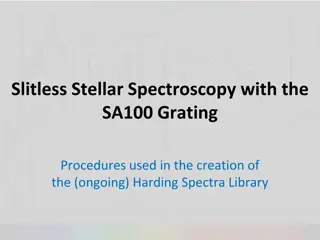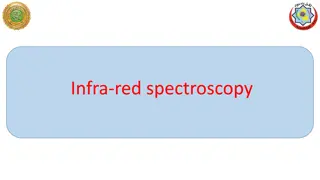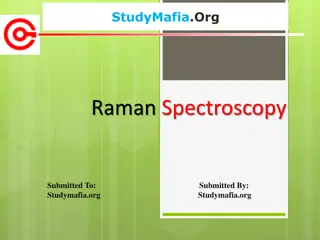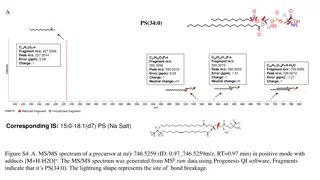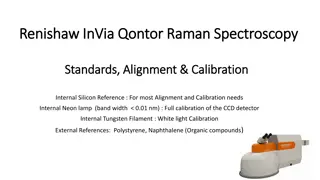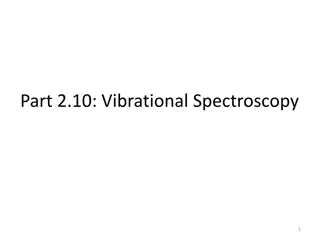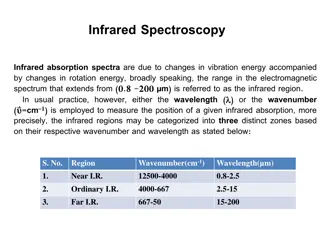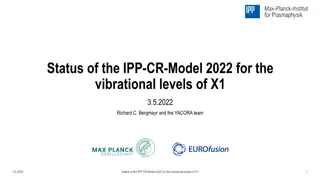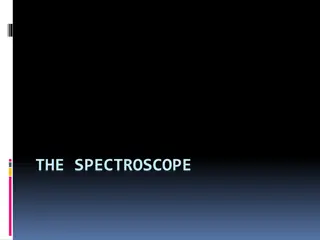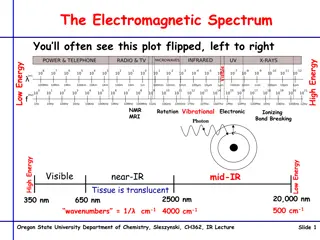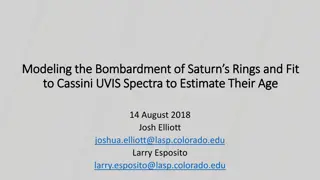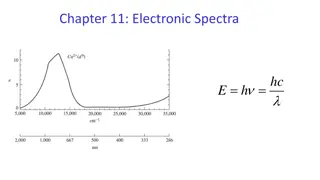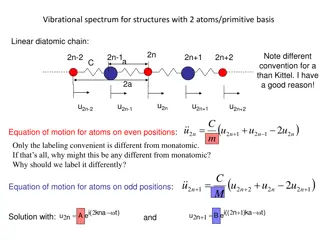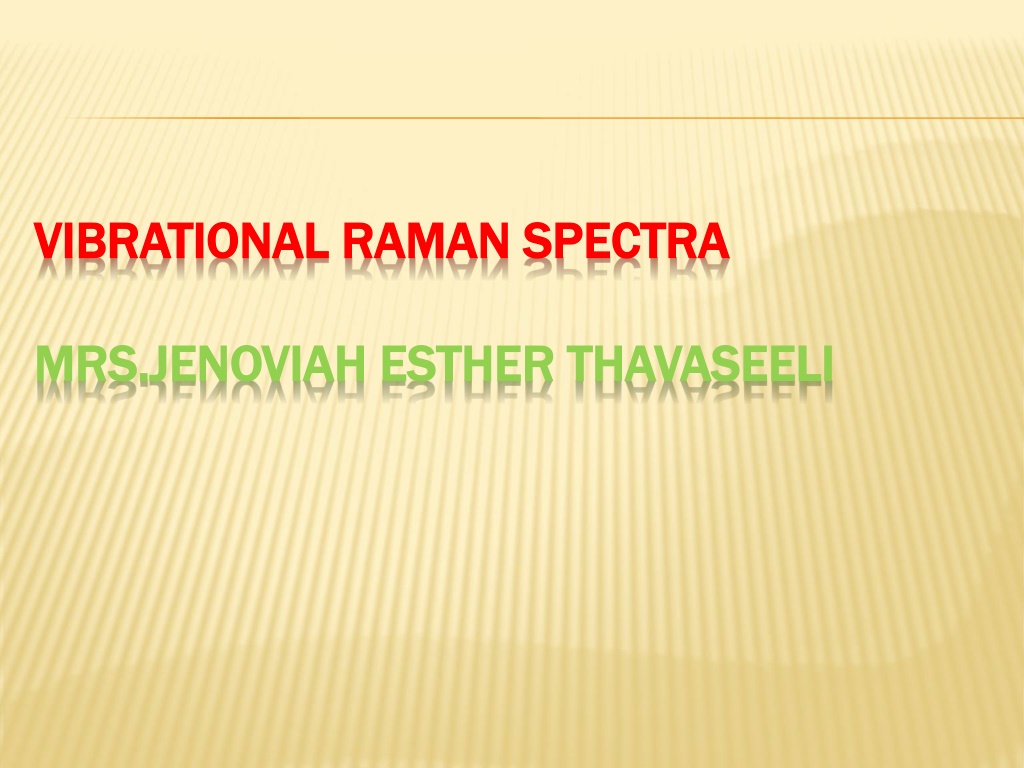
Understanding Vibrational Raman Spectra and Mode Activities
Explore the world of vibrational Raman spectra and mode activities, from molecular symmetry to polarizability changes during vibrations. Learn how different motions affect the shape and direction of polarizability, making certain modes Raman active.
Download Presentation

Please find below an Image/Link to download the presentation.
The content on the website is provided AS IS for your information and personal use only. It may not be sold, licensed, or shared on other websites without obtaining consent from the author. Download presentation by click this link. If you encounter any issues during the download, it is possible that the publisher has removed the file from their server.
E N D
Presentation Transcript
VIBRATIONAL RAMAN SPECTRA VIBRATIONAL RAMAN SPECTRA MRS.JENOVIAH MRS.JENOVIAH ESTHER ESTHER THAVASEELI THAVASEELI
RAMAN ACTIVITY OF VIBRATIONS RAMAN ACTIVITY OF VIBRATIONS Molecule has little or no symmetry it is a very easy to decide whether the fundamental modes will be raman active or inactive When the molecule has considerable symmetry it is not easy to make the decision, since it is sometimes not clear Polarizability changes during the vibration is to be noted
EXAMPLE EXAMPLE Consider the simple asymmetric molecule H H O O It has three fundamental modes of vibrations they are symmetric stretching mode b) b) bending mode c) c) asymmetric stretching mode a)
EXPLANATION OF THE ABOVE FIGURES EXPLANATION OF THE ABOVE FIGURES The changes in the shape, size, direction of polarizability of its three vibrational modes . The centre column shows the equilibrium position of the molecule while right and left are extremes of each vibration
During the symmetric stretch, the molecule as a whole increases and decreases in size, the bond is stretched, the electron forming it are less firmly held by the nuclei and so the bond become polarizable In the bending motion the shape of the ellipsoid which changes(we imagine vibrations of large amplitude) one extreme(left) approaches the linear configuration other extreme (right) approximates to diatomic molecule. In the asymmetric strectching both the size & shape remains constant , but the direction of the major axis changes markedly Thus all the three vibrations involve changes atleast one aspect of the polarizability ellipsoid and all are raman active
EXAMPLE EXAMPLE Consider the linear triatomic molecule CO It has three fundamental modes of vibrations a) a) symmetric stretching mode b) b) bending mode c) c) asymmetric stretching mode CO
EXPLANATION OF THE FIQURES EXPLANATION OF THE FIQURES The change in the polarizability ellipsoid of carbon dioxide during its vibrations and a graph showing the variation of polarizability, " with the displacement during each vibration.
SYMMETRIC STRETCHING MODE If the equilibrium value if the polarizability is then, when the bonds stretch ( positive), increases , while when the bond contrast decreases. Concerned only with small displacements; the curve has d /d not equal to zero at =0 For small displacement the motion produces change in polarizability and is therefore raman active
BENDING MODE The downward displacement of the oxygen atoms as a negative and an upwards diplacement as positive. It is not clear whether the motion causes an increases or decreases in polarizability We can plot against on the right with as before = at =0 Small displacements there is effectively no change in the polarizability and the motion is raman active
ASYMMETRIC STRETCHING MODE The polarizability decreases equally for positive and negative , so the polarizability against. Again d /d =0 For small displacement and the motion is raman inactive
In particular, a bending motion usually yields only a weak raman line example motion of H H O O although allowed in raman , has not been observed , nor has for which d d /d small /d is also MODES MODES OF VIBRATION OF CO VIBRATION OF CO OF RAMAN RAMAN INFRA INFRA- - RED RED symmetric stretch active inactive bend Inactive active asymmetric stretch inactive active




